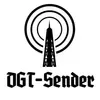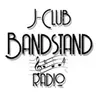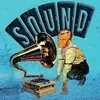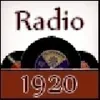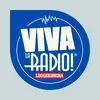40s Live Radio Stations
Radio Stations
Choose a Genre
The Music of the 1940s: A Decade of Musical Evolution
The 1940s stands as a landmark decade in the evolution of American music, shaping the soundscape of the 20th century and laying the foundation for the popular music genres that would dominate for decades to come. Amid the backdrop of World War II, radio stations became the heartbeat of the American home, delivering not only news and information but also a diverse array of music that resonated deeply with the public. The music of the 1940s reflects a unique period in history, where artists pushed the boundaries of musical genres, creating a lasting legacy that continues to influence music today.
A Diverse Soundtrack: Swing, Big Band, and Jazz
The 1940s were marked by a continued dominance of swing and big band music, styles that had already made their mark in the previous decade but found even greater expression and expansion during this period. Swing music, characterized by its infectious rhythms, energetic improvisation, and bold melodies, became the soundtrack of dance halls, clubs, and radio stations across the country. The era’s most iconic orchestras, including the Glenn Miller Orchestra, Count Basie Orchestra, and Duke Ellington Orchestra, led the way with their larger-than-life ensembles, filling the airwaves with vibrant, toe-tapping tunes that defined the decade.
Big band music, a cousin to swing, further evolved in the 1940s. While big bands maintained the strong, driving rhythms of swing, they were known for their more elaborate arrangements and a broader mix of musical influences. Orchestras such as the Benny Goodman Orchestra, Tommy Dorsey Orchestra, and Artie Shaw Orchestra showcased the power of brass and woodwind sections, bringing a sense of grandeur and sophistication to the period’s musical landscape. These bands played a central role in defining the sound of the era, making big band an enduring symbol of the 1940s.
The Rise of Bebop and the Evolution of Jazz
As swing and big band music dominated the mainstream, a revolution was taking place in the world of jazz. The 1940s saw the emergence of bebop, a fast-paced, intricate form of jazz that required technical prowess and creative improvisation. Bebop pioneers such as Charlie Parker, Dizzy Gillespie, and Thelonious Monk pushed jazz to new heights, breaking away from the more straightforward structures of swing to explore complex harmonies, rapid tempos, and innovative improvisational techniques. This shift in the jazz world brought about a more cerebral, sophisticated style that would go on to influence generations of jazz musicians.
Bebop’s rise marked a turning point for jazz, elevating it from dance music to an art form that was meant to be listened to closely, appreciated for its complexity and skill. This transformation, alongside the enduring popularity of swing, helped cement jazz as one of the most important genres in the American music scene during the 1940s and beyond.
Blues and Popular Music in the 1940s
Blues music, with its emotional depth and rich history, continued to thrive during the 1940s, adding its own unique flavor to the decade’s musical mix. Known for its expressive lyrics, soulful instrumentation, and call-and-response structure, the blues provided a powerful emotional outlet for many listeners. Legendary blues artists like Muddy Waters, B.B. King, and Howlin’ Wolf rose to prominence during this time, blending traditional blues with the evolving sounds of the era to create a distinctive, groundbreaking style that would have a profound impact on future generations of musicians.
In addition to blues and jazz, the 1940s also saw the continued success of popular music, which became synonymous with the era’s crooners. Artists like Frank Sinatra, Bing Crosby, and Nat King Cole brought smooth vocal performances and heartfelt ballads to the forefront, captivating listeners with their emotive interpretations of love, loss, and longing. The sentimental nature of these ballads resonated deeply with a public weary from the hardships of war, offering a comforting escape and a sense of unity through music.
The 1940s: A Musical Legacy
The 1940s was a time of unparalleled musical innovation, a decade that saw the blending of multiple genres and the emergence of new styles that would leave a lasting impact on American music. Swing, big band, bebop, blues, and popular ballads all flourished, and radio stations of the time played a central role in shaping the cultural landscape, ensuring these diverse sounds reached the homes of listeners across the country.
Today, the music of the 1940s continues to captivate audiences worldwide. The infectious rhythms of swing, the virtuosity of bebop, and the smooth crooning of ballads all retain their charm, inviting new generations to discover the rich musical heritage of this extraordinary decade. Whether you're drawn to the jazz improvisations of Charlie Parker, the energetic rhythms of big band music, or the soulful crooning of Sinatra, the 1940s offers an unforgettable listening experience that showcases the transformative power of music.
Conclusion
The music of the 1940s is a testament to the creativity and resilience of artists during a time of great global turmoil. Through swing, jazz, blues, and crooning ballads, the music of the era brought people together and provided both entertainment and solace during one of the most challenging times in history. Whether you're a fan of complex jazz, energetic big band rhythms, or soothing ballads, the music of the 1940s offers a rich, enduring experience that remains an integral part of the American cultural legacy.
The 1940s stands as a landmark decade in the evolution of American music, shaping the soundscape of the 20th century and laying the foundation for the popular music genres that would dominate for decades to come. Amid the backdrop of World War II, radio stations became the heartbeat of the American home, delivering not only news and information but also a diverse array of music that resonated deeply with the public. The music of the 1940s reflects a unique period in history, where artists pushed the boundaries of musical genres, creating a lasting legacy that continues to influence music today.
A Diverse Soundtrack: Swing, Big Band, and Jazz
The 1940s were marked by a continued dominance of swing and big band music, styles that had already made their mark in the previous decade but found even greater expression and expansion during this period. Swing music, characterized by its infectious rhythms, energetic improvisation, and bold melodies, became the soundtrack of dance halls, clubs, and radio stations across the country. The era’s most iconic orchestras, including the Glenn Miller Orchestra, Count Basie Orchestra, and Duke Ellington Orchestra, led the way with their larger-than-life ensembles, filling the airwaves with vibrant, toe-tapping tunes that defined the decade.
Big band music, a cousin to swing, further evolved in the 1940s. While big bands maintained the strong, driving rhythms of swing, they were known for their more elaborate arrangements and a broader mix of musical influences. Orchestras such as the Benny Goodman Orchestra, Tommy Dorsey Orchestra, and Artie Shaw Orchestra showcased the power of brass and woodwind sections, bringing a sense of grandeur and sophistication to the period’s musical landscape. These bands played a central role in defining the sound of the era, making big band an enduring symbol of the 1940s.
The Rise of Bebop and the Evolution of Jazz
As swing and big band music dominated the mainstream, a revolution was taking place in the world of jazz. The 1940s saw the emergence of bebop, a fast-paced, intricate form of jazz that required technical prowess and creative improvisation. Bebop pioneers such as Charlie Parker, Dizzy Gillespie, and Thelonious Monk pushed jazz to new heights, breaking away from the more straightforward structures of swing to explore complex harmonies, rapid tempos, and innovative improvisational techniques. This shift in the jazz world brought about a more cerebral, sophisticated style that would go on to influence generations of jazz musicians.
Bebop’s rise marked a turning point for jazz, elevating it from dance music to an art form that was meant to be listened to closely, appreciated for its complexity and skill. This transformation, alongside the enduring popularity of swing, helped cement jazz as one of the most important genres in the American music scene during the 1940s and beyond.
Blues and Popular Music in the 1940s
Blues music, with its emotional depth and rich history, continued to thrive during the 1940s, adding its own unique flavor to the decade’s musical mix. Known for its expressive lyrics, soulful instrumentation, and call-and-response structure, the blues provided a powerful emotional outlet for many listeners. Legendary blues artists like Muddy Waters, B.B. King, and Howlin’ Wolf rose to prominence during this time, blending traditional blues with the evolving sounds of the era to create a distinctive, groundbreaking style that would have a profound impact on future generations of musicians.
In addition to blues and jazz, the 1940s also saw the continued success of popular music, which became synonymous with the era’s crooners. Artists like Frank Sinatra, Bing Crosby, and Nat King Cole brought smooth vocal performances and heartfelt ballads to the forefront, captivating listeners with their emotive interpretations of love, loss, and longing. The sentimental nature of these ballads resonated deeply with a public weary from the hardships of war, offering a comforting escape and a sense of unity through music.
The 1940s: A Musical Legacy
The 1940s was a time of unparalleled musical innovation, a decade that saw the blending of multiple genres and the emergence of new styles that would leave a lasting impact on American music. Swing, big band, bebop, blues, and popular ballads all flourished, and radio stations of the time played a central role in shaping the cultural landscape, ensuring these diverse sounds reached the homes of listeners across the country.
Today, the music of the 1940s continues to captivate audiences worldwide. The infectious rhythms of swing, the virtuosity of bebop, and the smooth crooning of ballads all retain their charm, inviting new generations to discover the rich musical heritage of this extraordinary decade. Whether you're drawn to the jazz improvisations of Charlie Parker, the energetic rhythms of big band music, or the soulful crooning of Sinatra, the 1940s offers an unforgettable listening experience that showcases the transformative power of music.
Conclusion
The music of the 1940s is a testament to the creativity and resilience of artists during a time of great global turmoil. Through swing, jazz, blues, and crooning ballads, the music of the era brought people together and provided both entertainment and solace during one of the most challenging times in history. Whether you're a fan of complex jazz, energetic big band rhythms, or soothing ballads, the music of the 1940s offers a rich, enduring experience that remains an integral part of the American cultural legacy.


